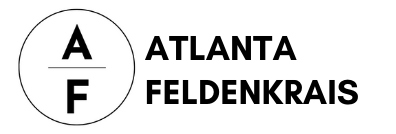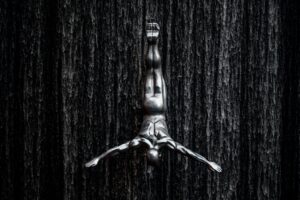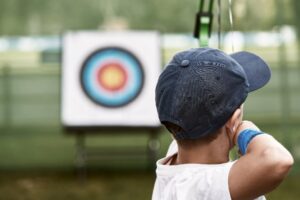Why It’s Not Your Fault & What Can Be Done About it

“It is quite erroneous to think, as some posture teachers do, that all the people in the world are wrong and do not know how to use themselves.”
Dr. Moshe Feldenkrais
In the previous article, we looked at some properties of good posture.
How our nervous systems evolved along with our skeletal and muscular systems to keep us balanced in gravity.
That good posture is our natural state, one achieved by doing less rather than more.
At this stage, a very basic question arises: If posture is an autonomic function of the nervous system in response to gravity, then why don’t most of us have good posture?
Why do so many of us struggle with it?
In other words, why don’t all humans walk in the same way, “just as one cat stands like every other cat, and every sparrow flies in exactly the same way?”(Awareness Through Movement” Pg 71)
We see that every person has their own unique way of carrying themselves. That we can recognize an acquaintance from afar, just by the way she stands or walks.
Other animals learn from the experience of their species while humans learn mainly through their own individual experiences.
Combined with the long dependency period during childhood (See “Chapter 3 – Are you an Adult”), our ability to learn from experience accounts for the differences we see in posture.
Dr. Feldenkrais considered posture to be a topic of some importance and he wrote extensively on the subject.
He linked the origin of faulty posture to the heightened emotional tone developed during childhood.
As he writes in “The Potent Self”, (pg 54) “Faulty posture can be traced to those factors that cause increased emotional tone. This happens every time we perceive a bodily tension, and the means to release it are not available.
Bad posture is the externally observable physical counterpart of internal conflict or contradiction.
It is cultivated during the dependence period when the child is called upon to perform acts for which she has not the means; that is, when she is induced to act by heightening her emotional tone and not spontaneously….” (Highlight mine)
As we saw in “Chapter 3 – Are You An Adult,” we develop a heightened emotional response to certain actions during childhood in order to comply with the wishes of adults on whom we depend for our survival.
As a result, we can no longer carry out these actions spontaneously. While performing them, we have an urge to act and at the same time, to stop ourselves from acting.
In other words, we act compulsively while experiencing an inner resistance to the act.
The inner resistance “is always expressed through muscular tension of the muscles of the face, the neck, the abdomen, the fingers, or the toes that can easily be detected if looked for.”
This unnecessary, or “parasitic” muscular contraction becomes associated with actions where we feel conflicting impulses, and it prevents us from smoothly performing the action without hesitation, or without excessive effort.
As we saw in the last chapter, any extraneous muscular contraction detracts from good posture.
This heightened tone, as well as the compulsive behavior related to these actions, carries over into adulthood.
Even “normal” children, who had an ordinary childhood, can encounter a benign situation which they interpreted as threatening their security. Or undergo phases when they felt inadequate in facing a new or demanding situation.
Dr. Feldenkrais writes in “The Potent Self” page 55, “Faulty posture always expresses the emotional stress that has been responsible for its formation. The most frequent and observable one is the stress of insecurity in its different aspects, such as hesitation, fear, doubt, apprehension, servility, unquestioning compliance – and their exact opposites.”
In his book “Chatter,” psychologist and scientist Ethan Kross writes that when we are placed in a stressful situation, we (subconsciously) ask ourselves two questions:
“What is required of me in these circumstances, and do I have the personal resources to cope with what’s required?”
If we realize that we do not possess the wherewithal needed to handle the situation, we perceive the stressor as a threat and our body reacts accordingly.
Our natural response to feelings of insecurity and fear is to shorten the body. To make ourselves smaller.
We instinctively react in this manner to protect the head and other vital organs when facing a threat or when perceiving danger.
Contracting the flexor muscles in the front of the body provides a sense of safety.
Dr. Feldenkrais writes in “The Potent Self” (pg 109), “In the body’s quest for safety, the flexor muscles are tensed and the extensors inhibited. This is the reaction to falling in all onsets of fear.
The lowering of the head and the sinking of the chest are the best movements to protect the body from injury expected to come from above, when flight is unthinkable and hitting back utterly prohibited (as it would be for a small child facing her parents).
And so long as this attitude of fear and abandonment is sustained by the personal experience of the individual, that posture remains the best possible.
She will revert to it in any sudden onslaught of circumstances demanding a fighting response to a powerful opponent; that is, in all circumstances in which she feels abandoned and left to fight her own battles.”
If this sense of anxiety, along with the conditions that sustain it, persist through childhood the resulting way of carrying ourselves becomes habitual.
Poor posture is then a matter of habit, a poor way of using ourselves.
We can develop bad habits and poor posture in childhood or as an adult.
As adults, it could be due to persistent, low grade stress, or putting in long hours at a desk job spent sitting in front of a computer screen.
Whatever the cause, “…we work out our own ways of holding our breath, of tensing our abdominal walls, or stiffening our hip joints. That is to say, we acquire our individual manner of doing our personal posture.” (The Potent Self pg 57)
Just as any habit becomes second nature to us, poor posture and our way of holding ourselves becomes habitual. Any deviance from it feels unnatural.
Our internal body image is distorted in such a way that we do not sense the misalignment of the skeleton. Nor do we sense the extra muscular effort we are making to stay upright in gravity
It is not that a certain way of holding oneself is intrinsically wrong or harmful.
It is also wrong to think that all the people in the world do not know how to stand, or sit, or to use themselves in general.
It is closer to the truth that most people are doing the best they can in the moment, with what they have learnt and the means they have at their disposal.
For the way we hold ourselves in gravity, despite the extraneous effort we make while doing it, has served us in some way.
We produce the wasted effort in order to comply with what was felt to be an absolute necessity. The faulty posture was the best we could produce at the moment, in order to do what was asked of us.
Yet, if we look it at from the way an action is accomplished, or can be accomplished by a human being, it leaves a lot of room for improvement.
As we established in Chapter 8, good posture maximizes the use of the skeleton to counter gravity, while antigravity muscles do the bare minimum under autonomic control of the nervous system.
Any voluntary muscular contraction interferes with and eventually compromises the workings of this finely tuned system.
The ill-effects of poor posture come not from any anatomical configuration that is harmful but the fact that it is compulsive and lacking true choice. One that only a poorly coordinated and immature person would use.
A person with poor posture lacks the maturity and hence the options to organize for movement in a way that matches the situation at hand. One which allows for smooth, spontaneous, effortless action in gravity.
Acquiring good posture then, is more a matter of acquiring maturity rather than a physical change to be imposed from the outside.
It is more about learning new options of acting and being rather than a particular configuration of the body.
To learn to act in response to the requirements of the present and not as a result of emotional conditioning from the past.
Our ability to act matures when we have learnt to separate the act itself from the emotional component attached to it in the past (See “Chapter 3 – Are you an Adult”).
We are then free to act as per the requirements of the present. To act with freedom and without conflict or hesitation.
In a way then, achieving emotional (and financial) independence and learning to exercise true choice will do more to improve posture than all the “posture exercises” one can think of.
In Chapter 3 – Part II, we also covered the 3 distinct stages involved in acquiring maturity in any skill, sense or function.
Let’s apply them now to posture.
In the first stage, while we are children, we develop compulsive behavior and the resulting poor posture in order to meet the demands of a difficult environment, or the adults in our family on whom we are dependent.
We have very limited or no choice at this stage.
In the second stage, when we are at the cusp of maturity, the difficulty or the challenge which created the insecurity and the resultant changes in posture may no longer be present, but the posture itself is sustained through force of habit or a lack of options.
In our teenage years, we may become aware of a difference between our posture and that of others. We may choose to stay with the same compromised posture, or to counter it and do the exact opposite by stiffening our spine and learning to hold ourselves rigidly erect.
In either case, we are still reacting to the initial situation which created our difficulties and which continues to guide our actions.
Or we may try to copy the posture of our idols from our early youth.
When we try to copy others or try to stand stiffly erect, it does change the appearance of the body, but it does so “not by lifting the contraction that needs lifting, but by making a compensatory one.” (The Potent Self” pg 122)
As we have seen, no voluntary action or effort can correct bad posture.
As a result, while the person may seem to have good posture, this superficial improvement comes at a big cost.
Dr. Feldenkrais continues in “The Potent Self” (pg 122): “By constant vigilance and self-reminding, one learns to maintain two conflicting contractions.
The results are the exclusion of movement in the parts under the conscious focusing, rigidity and muscular tenseness, halting of breath, and all the rest of it. In the long run the pattern becomes habitual, semiautomatic, and familiar to the point of being considered as one’s own nature, but only at the expense of strain and nervous exhaustion.”
This unnecessary effort, in fact, detracts from good posture. We lose suppleness and movement in the body parts where we brace ourselves, which in turn reduces our ability to move as a whole.
Stiff and erratic movements are the natural result of this arrangement.
Further, the extra effort becomes a part of who we are and everything that we do. We begin to identify with it, as if it were an essential part of us.
Any change, even if it is for the better, seems unnatural and we quickly revert back to what we have learned and what feels familiar and comfortable.
This is the reason why it is so hard to improve posture.
Things look quite pessimistic at this point. We appear to be at the mercy of external factors and our involuntary reactions to them.
We do not seem to have any choice in the matter.
This however, does not take into account the ability of the nervous system to discriminate, to adapt and to learn.
To discard what is not useful and to integrate what is. To allow the arrested process of maturity to resume.
In the third and final stage of acquiring maturity, when we have had the opportunity to suitably distance ourselves from the original situation and at the same time, develop a certain confidence in our abilities, we learn to separate the emotional content from the way we act and hold ourselves.
We learn to act (or not act) without internal conflict and with the minimum of effort.
To direct ourselves in ways that are more in line with the needs of our current environment and with our true likes and dislikes.
Let’s go back to Ethan Kross and the two questions we ask ourselves when under stress, i.e., what is being asked of me and can I cope?
If we now find within ourselves the capability to adequately deal with the situation, we consider it a challenge instead of a threat.
In this case, our body gears up differently than when we perceive ourselves lacking and under threat.
When facing a challenge we marshal our mental and physical resources in order to respond.
The more options we have at our disposal and the more ways in which we know how to respond, the easier it is for us to choose a suitable response without over-extending ourselves physically and emotionally.
And the next time we face a similar situation, we can further reduce the effort required to successfully deal with it.
Or try a new way to tackle it.
We increasingly begin act in a manner where we do only what is essential and nothing more.
To act with true choice instead of compulsion. With poise, balance and with good posture.
A good starting point in cultivating good posture is to improve the overall sensitivity of the system.
To increase our ability to discriminate, to sense and feel ourselves.
As Dr. Feldenkrais writes in “Awareness Through Movement” Pg 75, “It seems reasonable to suppose that if we were to increase the degree of our awareness of muscular effort when our muscles are working as the result of voluntary action, then we shall also learn to recognize muscular efforts that, as the result of habit, are normally concealed from our conscious mind.
If we can rid ourselves of such superfluous effort we shall recognize the ideal stable position with greater clarity. Then we shall have “returned” to the stage in which all conscious muscular effort to maintain equilibrium disappears, for this equilibrium is maintained solely by the older parts of the nervous system, which will find for us the best possible position compatible with the individual’s inherited physical structure.”
This is consistent with Dr. Feldenkrais’ approach of working to change the self-image of the person rather than changing individual actions.
By focusing on reducing muscular effort while acting, we can begin to find out what is essential for the action to be successfully accomplished.
By applying this metric to anything we do, and discarding any superfluous effort, we can continuously improve our ability to act with good posture.
In “Awareness Through Movement” (ATM) or group lessons from the Feldenkrais Method®, the main emphasis is on sensing and reducing unnecessary effort during movements.
ATM lessons are done lying on the floor, relieving the nervous system of the demanding task of keeping us erect on two feet.
When lying down, we are fully supported by the floor and no tonal muscular contractions are required in response to gravity.
Yet, we can all sense residual contractions in the chest, spine, arms and legs.
For example, we can sense the space between the lower back and the floor as muscles in the lower back remain habitually contracted even as we lie on the ground.
After an ATM lesson, one that involves flexion, we can clearly feel that the lower back has come closer in contact with the floor as the parasitic contractions are reduced in the lower back.
During “Functional Integration” (FI) or individual, hands-on sessions, the Feldenkrais practitioner aims to move the student in a manner that allows her to feel weightless in gravity. To experience complete ease and comfort as they explore the range of movements allowed by the skeleton.
This allows the nervous system to reset to its preferred setting of using minimum muscular effort.
In my practice I have noticed that students with the highest level of “parasitic” contractions have the most difficulty in sensing the extra effort they are making. The level of noise in their system is very high due to all the muscular work being done.
All the extra work also leads to stiffness and lack of mobility in parts of the body as well as a general lack of flexibility.
As they continue to do Feldenkrais lessons, their ability to sense and let go of extraneous effort improves. They learn to soften their chest and shoulders and to let go of all the work and holding they have going on.
As a result, their mobility and flexibility improve as does their ability to function as a whole.
Dr. Feldenkrais used to say, “Your brain is smarter than you!”
Once the nervous system becomes aware of unnecessary effort, or a more efficient way to move, it automatically integrates that into its repertoire.
The brain maps and the self-image are updated accordingly through the special linkage movement has with the nervous system (See Chapter 2 – Why Do You Have a Brain).
The same processes which allows the nervous system to control the automatic, tonal contractions in response to gravity come into play, resulting in an overall improvement in posture and quality of movement.
As humans, we are very sensitive to change. Even small improvements in posture lead to huge improvements in our movement and quality of life.
At first, these changes are felt internally, well before others can notice it from the outside.
Over a period of time, these positive changes add up.
As our posture improves, we can rely more on the automatic processes which keep us balanced in gravity. We no longer need to make an extra effort, or to consciously control our posture.
We can then simply focus on the task at hand.
We feel more balanced, more spontaneous and more willing to take on new challenges and adventures.
Do you think good posture is a matter of trying harder or doing less? Share your thoughts in the comments section below.




1 Comment
Leave your reply.